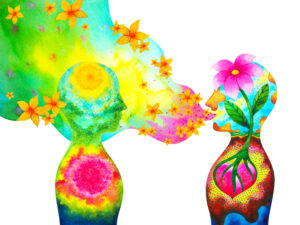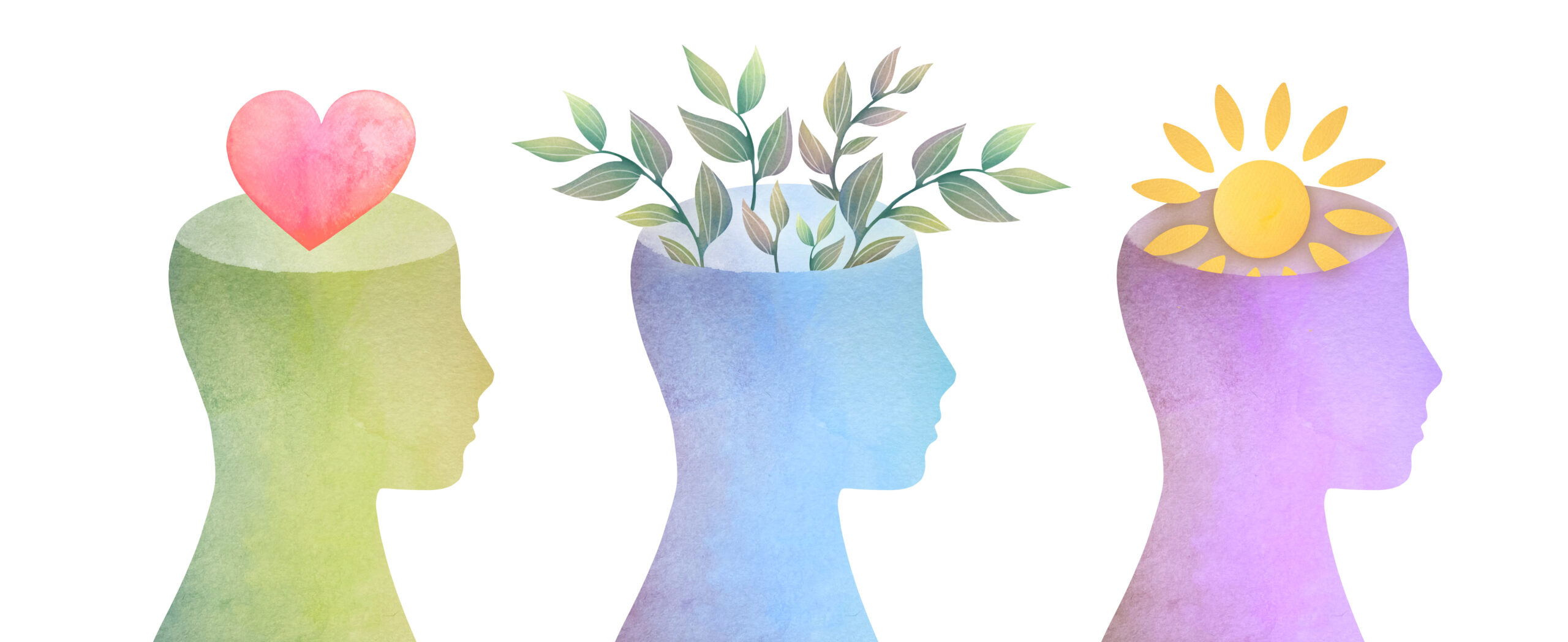by Jonathan Benavides
Note: The following is an excerpt of course notes for Practical AromaPsychology. Jonathan Benavides passed away in May 2025.
 In a person-centered therapy framework, which emphasizes empathy, unconditional positive regard, and the client’s self-actualization, the use of aromas can play a supportive and enhancing role in the therapeutic process. Aromas establish a warm, welcoming, comfortable, calming, and secure therapeutic milieu, thereby setting the tone for the session and fostering a sense of ease and openness and, honest communication. Such techniques can facilitate the establishment of rapport and trust between the therapist and the client.
In a person-centered therapy framework, which emphasizes empathy, unconditional positive regard, and the client’s self-actualization, the use of aromas can play a supportive and enhancing role in the therapeutic process. Aromas establish a warm, welcoming, comfortable, calming, and secure therapeutic milieu, thereby setting the tone for the session and fostering a sense of ease and openness and, honest communication. Such techniques can facilitate the establishment of rapport and trust between the therapist and the client.
Certain aromas – selected by the client – can be employed as a gentle instrument to facilitate emotional exploration and expression. They might evoke emotions and memories, assisting clients in accessing and expressing their feelings in the present moment. Clients can focus on the sensory experience of the aroma during mindfulness exercises, enhancing present-moment awareness and promoting self-reflection, which is necessary to symbolically explore themes of personal meaning and identity. In CCT, clients are autonomous and responsible for their well-being.
Creating a safe, accepting and non-judgmental environment
Creating an empathetic environment is a fundamental aspect of humanistic psychology, which places the individual at the center of its theoretical framework. This client-centered approach is predicated on the assumption that humans have an innate tendency to find fulfillment in their potential. In facilitating this process, the therapist assists the client in recognizing their inherent capacity for self-healing and personal growth.
To establish a secure environment, the therapist must embody three essential qualities. First, they must demonstrate complete authenticity and consistency in their interactions. Second, they must avoid criticizing or dismissing the clients’ perceptions or experiences. Third, they must actively strive to comprehend the client’s unique perspective.
As clinical aromatherapists operating within an integrative health paradigm, this non-directive approach is optimal for utilization as a supplementary intervention in conjunction with conventional psychological therapy.
The therapist does not assume an authoritative role; instead, they serve as a companion, facilitating a safe space for clients to explore and gain insight intotheir thoughts, emotions, and behaviors through positive olfactory exploration and the emotional and cognitive expression of the scents used.
The role of the aromatherapist is not so much to alter the individual’s mental state but rather to facilitate an empathic dialogue in which the client’s expressions are reflected back to them. This reflection is intended to assist the client in interpreting their experiences, encouraging them to reflect on any emotional deficiencies and psychological issues that may require resolution.
Why do we need to be empathetic?
Empathy entails a mutual emotional experience, whereas sympathy denotes concern and pity devoid of shared emotions. Empathy fosters a more profound and intimate connection, whereas sympathy remains relatively superficial and detached. Empathy often gives rise to compassionate actions based on understanding, whereas sympathy may only result in expressions of sorrow or concern.
Therapists who demonstrate empathy by actively listening, validating clients’ emotions, and showing genuine understanding can facilitate the formation of stron

ger therapeutic alliances and the healing process (Cuff et al., 2016). In contrast, an exclusive reliance on sympathy may engender a sense of distance or disconnection between the therapist and the client, which could impede the efficacy of the therapeutic relationship.
Opening the door
The term “opening the communication doors” is used in a therapeutic setting to describe the creation of an environment in which clients feel safe and willing to share their thoughts, feelings, and experiences openly. This entails establishing a therapeutic relationship that fosters transparent and efficacious dialogue between the counselor and the client.
From an olfactory perspective, floral aromas are intrinsic to initiating any aromatic discourse. In my clinical practice, I have seen that most clients readily accept these aromas. They perceived them as sweet, powdery, warm, familiar, and welcoming, prompting a sense of deep calm and comfort.
The selected aroma is presented on a perfume strip (1 drop) and intermittently approached to the recipient’s nose once every two minutes during the intervention.
Patient feedback indicated that inhaling scents facilitated body relaxation, inward reflection, and active engagement with the aromatic process. This resulted in enhanced self-confidence, expanded spiritual self-reflection, and gratitude for the ability to inhale, perceive colors, experience inspiration, and recall vivid memories (Benavides, 2018).
There are three primary aromatic openers:
 Clary sage essential oil is distilled from the aerial parts of the Salvia sclarea plant. The aroma is described in perfumery as floral, warm, subtle, spicy, powdery, and somewhat herbal. Many of my clients in clinical practice have described this aroma as relaxing and comforting, helping them to be in the here and now.
Clary sage essential oil is distilled from the aerial parts of the Salvia sclarea plant. The aroma is described in perfumery as floral, warm, subtle, spicy, powdery, and somewhat herbal. Many of my clients in clinical practice have described this aroma as relaxing and comforting, helping them to be in the here and now.
Rose essential oil is derived from the petals of highly fragrant roses cultivated in Bulgaria, Turkey, France, and Iran. The rose has traditionally been regarded as the epitome of femininity and a symbol of maternal love. The oil is frequently utilized in conventional palliative settings due to its ability to provide a sense of equilibrium, its soothing and gentle properties, and its high degree of recognition among clients. Traditionally speaking, the rose is, for many, a symbol of unconditional love and commitment. Having this in mind, inhaling and experiencing the scent of diluted rose essential oil is, for me, akin to embarking on a discrete journey that commences in a verdant, humid, and fresh state and culminates in an ethereal, luminous, and floral finale.
Ylang-ylang EO is distilled from the flowers of the Cananga odorata tree and is widely used for its complex aroma. The scent is often described in perfumery as having bright, fruity-floral notes that develop into deeper, sensual, heady, balsamic, woody, and powdery tones.
Reflecting on emotional aromatic choices
Reflecting on emotional aromatic choices in counseling entails a conscious and deliberate consideration of the potential impact that scents and aromas may have on the emotional well-being of clients during therapy sessions. It entails a cautious examination of the potential benefits and risks associated with the utilization of scents to foster a tranquil ambiance within the therapeutic setting. The utilization of aromatherapy in counseling has been acknowledged as a supplementary approach to facilitate relaxation, mitigate anxiety, and augment the therapeutic milieu (Lee et al., 2018).
 A review of the literature indicates that certain essential oils possess a highly personal mood-evoking properties. For example, lavender essential oil is renowned for its calming effects and has been demonstrated to diminish anxiety levels in clinical settings for specific individuals (Kasper et al., 2019). Similarly, bergamot essential oil has been linked to reducing stress and enhancing positive feelings (Han et al., 2016).
A review of the literature indicates that certain essential oils possess a highly personal mood-evoking properties. For example, lavender essential oil is renowned for its calming effects and has been demonstrated to diminish anxiety levels in clinical settings for specific individuals (Kasper et al., 2019). Similarly, bergamot essential oil has been linked to reducing stress and enhancing positive feelings (Han et al., 2016).
Moreover, research indicates that olfactory stimuli can evoke emotional memories and influence mood regulation (Herz, 2009). The strategic incorporation of carefully selected scents into the counseling environment can facilitate more effective emotional access and processing by clients during therapy sessions. To corroborate this, I have seen in my clinical practice that using scents such as lavender, mandarin, or roman chamomile has facilitate relaxation and reduced anxiety during sessions in several clients.
You need to assess the impact of scents on clients’ emotional states and adjust the use of aromas based on their feedback. No one scent can be considered universally pleasing to everyone. Some customers may find certain scents triggering, overpowering, or simply dislike them. This underscores the importance of selecting scents according to their tastes.
Possibilities and limitations of aromapsychology in mental healthcare
AromaPsychology, when used within its scope of practice, offers several possibilities for supporting mental health care. Its integration with traditional treatments can provide unique and beneficial effects, especially in managing symptoms and enhancing emotional well-being.
AromaPsychology can serve as a complementary therapy, working alongside traditional mental health treatments such as cognitive-behavioral therapy (CBT), psychotherapy, and medication. It can help individuals manage symptoms and emotional states, enhancing overall well-being without replacing core treatments.
Aromatherapy may offer short-term relief from mental health symptoms, such as stress, anxiety, or fatigue, but it is generally not sufficient to address the underlying causes of mental health disorders. It can help individuals manage symptoms temporarily but should not be expected to provide a lasting solution without other therapeutic interventions.
Essential oils have only a very limited efficacy for managing some severe mental health conditions like psychosis, schizophrenia, or bipolar disorder, especially during acute episodes. While it may be helpful in providing sensory support or emotional regulation in milder cases, it should not be relied upon in situations where professional psychiatric care is necessary.
As a student or practitioner in Aroma Psychology, you must adhere to the highest ethical standards to ensure a healthy and respectful relationship with your client. In this context, having a standard for therapy helps clients make informed decisions. This is the basic idea of any client-centered approach: respect clients’ autonomy. Each client reacts differently to the oils used by their therapist. The goal is to ensure that every part of the therapy is done with the greatest care, attention, and respect for the client and therapist.
CITATIONS:
Benavides J (2023) Rest on me, breathe…Emotional Palliative Care. Manuel Barbosa & Filhos Liboa, Portugal
Cuff, B. M., Brown, S. J., Taylor, L., & Howat, D. J. (2016). Empathy: A review of the concept. Emotion Review, 8(2), 144-153.
Han, X., Gibson, J., Eggett, D. L., & Parker, T. L. (2016). Bergamot (Citrus bergamia) essential oil inhalation improves positive feelings in the waiting room of a mental health treatment center: A pilot study. Phytotherapy Research, 30(2), 298-301.
Herz, R. S. (2009). Aromatherapy facts and fictions: A scientific analysis of olfactory effects on mood, physiology, and behavior. International Journal of Neuroscience, 119(2), 263-290.
Kasper, S., Gastpar, M., Müller, W. E., et al. (2019). Silexan, an orally administered Lavandula oil preparation, is effective in the treatment of ‘subsyndromal’ anxiety disorder: A randomized, double-blind, placebo-controlled trial. International Clinical Psychopharmacology, 25(5), 277-287.
Lee, Y., Kim, H., & Lim, H. (2018). Effects of aromatherapy on stress, stress responses, and emotional states in high school students: A randomized controlled trial. Journal of Korean Academy of Nursing, 48(4), 464-473.


THANK YOU FOR SHARING THESE WISE WORDS FROM jONATHAN- I WAS LUCKY ENOUGH TO STUDY ON THIS COURSE AND LOVED EVERY MINUTE OF IT. I AM VERY SAD TO HEAR OF HIS PASSING AND WILL CHERISH EVEN MORE THE LESSONS AND INFORMATION HE SHARED.